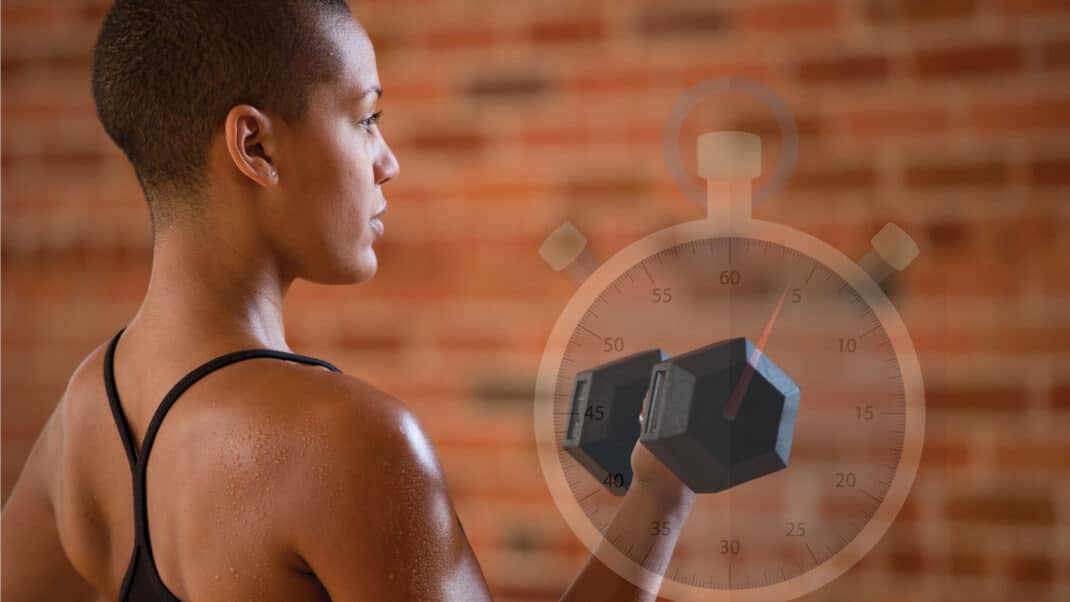Trends in Personal Training
New survey shows trainers are confident and profession is growing.

Personal training continues to grow, despite the political and economic turmoil of the past few years. Responding to the 2004 IDEA Programs & Equipment Survey, IDEA personal
fitness trainer (PFT) members reported positive directions in their profession.
Highlights of this first-time survey showed trainers are experiencing
- continued sales of personal training, with one-to-one sessions being the most popular
- high usage levels of both portable and stationary equipment
- blending of personal training with Pilates or yoga
- strength training emphasizing equipment, although body weight training has a presence, perhaps owing to the number of trainers working in clients’ homes
- diversification into lifestyle
coaching, nutrition assessment and use of the Internet
Personal training businesses need
to customize their programs to their
particular locations and clienteles. PFTs working with the equipment available in large multipurpose clubs will report different program and equipment use than those working in clients’ homes or smaller personal training gyms. Despite the potential disparity resulting from work locations, there is a lot of consistency among the trainers.
About the Respondents
IDEA PFT members who gave us permission to use their e-mail addresses were sent three e-mail invitations to link to a Web-based survey in April 2004. The 157 trainers who responded represent 36% owners, 13% personal training directors, 10% fitness directors, 2% general managers and 33% “other” titles.
About Median and Mean
When the difference between the mean and median numbers is large, then a median is provided. Why? The mean (average) is found by adding together all the numbers and dividing by the number of responses. But very large numbers and very small numbers create a wide range, and that range can make an average less representative of most of the people. You can see this by looking at the number of personal training
sessions offered per week.
The median is the midpoint, meaning 50% of respondents answered above and 50% answered below that number. A median is useful because it helps eliminate the distortion that an average can cause.
With an expansion of services (lifestyle coaching, sports conditioning, Pilates, yoga and online client reminders are on the growth list) and predictions of growth all around, the outlook for personal training is optimistic. This is good for PFTs—and good for their clients, who are inspired to fitness.
Client retention is critical to the success of your business. But are you really doing all you can to let members know they’re your priority? Do your personnel understand your expectations for their roles in client retention? If you don’t have established criteria, it may be time to develop a road map for yourself and your employees. Use these seven basic steps—suggested by Richard Gerson, PhD, in his book Members for Life (Human Kinetics 1999)—to get your retention program on the right track.
- Have a clear member service mission, vision and philosophy. Communicate these to your employees, and then train and empower them to carry out the service mission.
- Provide clients with quality products, services and care.
- Listen closely to your clients and then act on their suggestions. Do the same for your employees.
- When serving clients, pay attention to your own intuition and have your employees pay attention to theirs.
- Treat clients with respect, trust, fairness, honesty and integrity.
- Communicate regularly with clients, including current clients, former clients and your competitors’ clients.
- Expand your product, program and service offerings carefully, ensuring that you can continue to provide quality member service while you grow.
Reprinted with permission from Human Kinetics.
Patricia Ryan, MS
Patricia Ryan, MS, develops educational content for leaders and professionals in the wellness, fitness and older-adult marketplaces. Ryan has conducted market research and authored numerous white papers, survey reports, industry analyses and research reviews along with producing educational webinars. She holds a master’s of science degree in instructional technology aimed at designing professional education. She was IDEA’s first editor in chief and developed the Gold Standard of content for which IDEA is still known.















